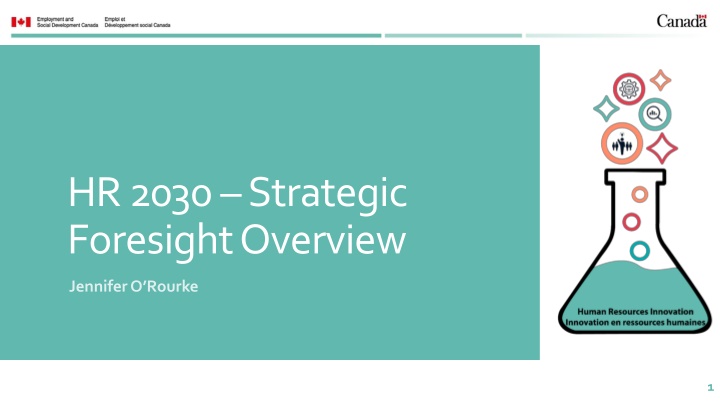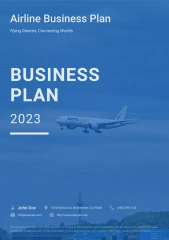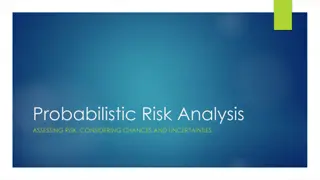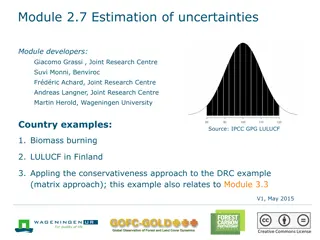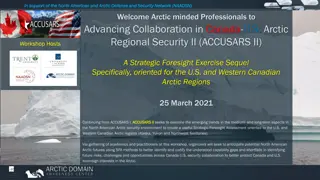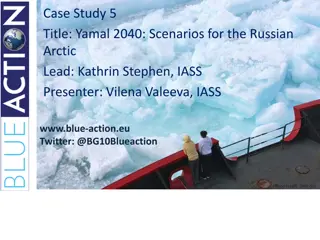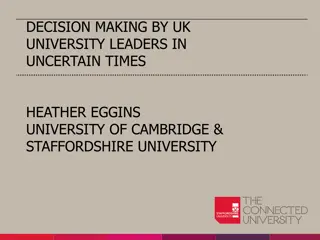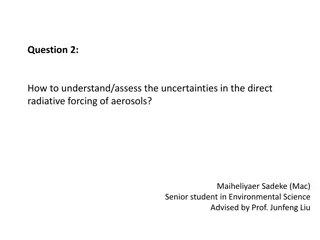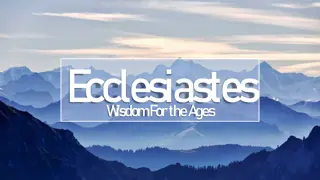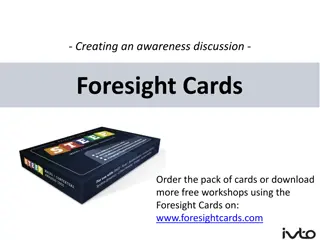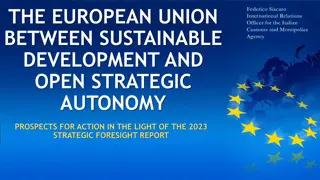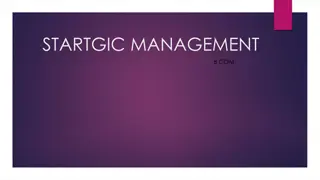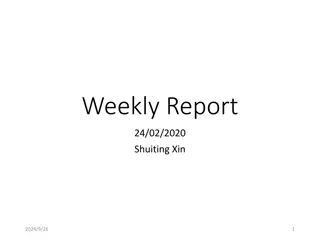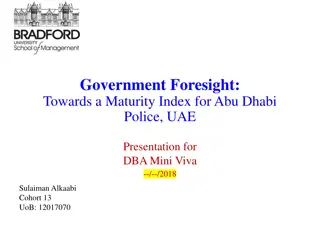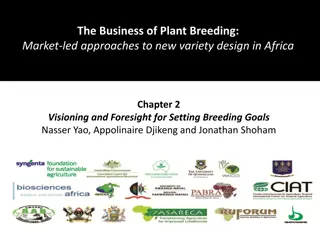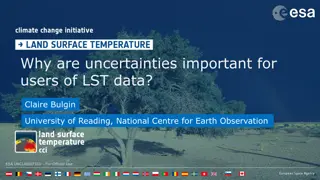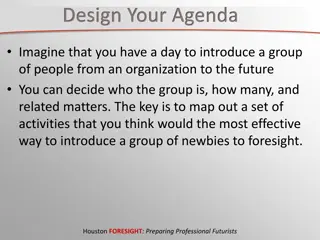Navigating Future Uncertainties with Strategic Foresight
Strategic Foresight helps leaders prepare for the unknown by exploring plausible futures, guiding strategic planning, and enhancing governance. Embracing change and committing to foresight initiatives are key to building robust policies for the future.
Download Presentation

Please find below an Image/Link to download the presentation.
The content on the website is provided AS IS for your information and personal use only. It may not be sold, licensed, or shared on other websites without obtaining consent from the author.If you encounter any issues during the download, it is possible that the publisher has removed the file from their server.
You are allowed to download the files provided on this website for personal or commercial use, subject to the condition that they are used lawfully. All files are the property of their respective owners.
The content on the website is provided AS IS for your information and personal use only. It may not be sold, licensed, or shared on other websites without obtaining consent from the author.
E N D
Presentation Transcript
HR 2030 Strategic ForesightOverview Jennifer O Rourke 1
The future is not optional Strategic Foresight: Explores plausible alternative futures to help us better prepare for uncertainty and surprise. Foresight: What is it and Why do we do it? Is a rigorous and systematic process. Distinct from forecasting. The objective of foresight is not to predict the future, but to: Assist leaders in strategic planning; Demystify and provide clarity on drivers of change and; Enhance capacity for smart, prudent, and anticipatory governance. 2 *Adapted from Policy Horizons Canada
Foresight explores a range of plausible alternative futures Exploring Alternative Futures There is no data on the future, it has not happened yet 3
Exploring the future can be scary People feel safe with what is familiar, predictable, and known. People feel uncomfortable with what is unfamiliar, unpredictable, and unknown. Challenges in Futures Work Constraints Leaders often have a multitude of urgent today matters that take up a significant portion of time. Futures work and foresight methodologies are not always well understood and can be quicklydismissed or not prioritized. Resources and subject matter expertise are scarce. 4 *Adapted from Policy Horizons Canada
Dealing with change and navigating into the future in a safe space It is important to recognize that it is OK to be concerned about change. Understanding that change is coming and embracing it is a process. To feel more in control of the future, people need to become familiar with the underlying changes coming. Embracing Change Once we understand the changes coming, we are empowered to have control of how they will play out and our own preparedness for them. This leads us to feel confident in our ability to build robust policies and programs that are future-proof. It is not good enough, as the clich goes, to be preparing for the last war. That means, on so many fronts, that we need to try to think ahead. Michael Wernick, Remarks at the Defence Leadership Symposium, October 17, 2017 5
How we can overcome constraints Commitment futures work requires commitment across all levels to see projects through. Executive champions like most change management and transformation processes, futures work requires buy-in at the top levels. Keys to Success in Strategic Futures Work Co-creation - co-creation is critical in ensuring we understand how plausible futures could directly impact certain areas and departments, like HR at ESDC. Resources successful foresight projects require a resource commitment. Expertise Experts in strategic foresight are critical to develop and guide projects and help usher people into the future safely. Trust and open-mindedness as foresight is a less understood field and we cannot possibly have data from the future (data by nature represents past occurrences), people can feel uncomfortable and skeptical of the work. Clear planning and project management having clear project plans and methodologies helps ensure foresight projects stay on track and provide outputs. 6
The Strategic Foresight Process Building the vision and preparing for next steps Scanning & Literature Review Preferred Future and Visioning Framing Change Drivers Scenarios Foresight study: The Future of Work and HR White Papers: COVID 19 and a return to work Examination of existing literature: forecasts, major trends, expected futures, foresight, historical analysis Scanning for signals of change Identifying, researching, and analysing major change drivers from Economic and HR systems, and COVID19 (ongoing) Developing scenarios on plausible futures for HR Identifying a preferred future and future states to avoid for HR and work SWOT Building a vision of the preferred future Solidify long-term vision Prepare for implementation phase another process (applied foresight)
Key Change Drivers From the Future of Work
Key Change Drivers Digital labour platforms and automation are driving job unbundling, leading to temporary and task-based work. AI and robotics combined with human workers to increase capabilities in knowledge-based and physical work. Combined digital technologies, such as augmented reality, virtual reality, and mixed reality, as well as relocation incentives are facilitating a rise in remote work. Advancements in digital technologies (the Internet of Things) are leading to a rise in smart cities and smart workspaces. Declining trust in government and changing information landscape are driving increased demands for transparency, a reluctance to share data with government, ever-expanding access to information of all types (false, opinion, factual etc.), and a need for digital and media literacy skills. We are further seeing non-government entities taking on traditional government services (cartels, corporations, non-profits etc). Societal expectations of the employer are changing. A shockwave from COVID 19 that has driven remote work combined with infinite information flows are driving a change to the employee/employer relationship *see appendix 1 for definitions 9
What the foresight points to for HR We cannot ignore the future coming at us in fact, it is already here! So, what does this future look like for HR? Predictive analytics, data centricity, and biometrics IoT integrated into personal and professional lives mass data gathering and hyper-personalization Reputation and monitoring systems Automation and AI Combine with analytics to produce performance evaluation, learning and career plans, redistribution of resources and talent Recruitment and staffing screening and matching candidates to positions/tasks available Job unbundling and a borderless virtual workforce Task-based work, hyper-individualized to match with employee skill sets 10 Global talent pool and virtual workspaces
Building Scenarios and a Preferred Future
Scenario Building Four Archetypes Approach Muddling Through Reacting to and coping with change as it arises without improving things Putting out fires Incremental Progress Embracing change Things may improve in an incremental fashion Could see too much caution to the wind Incremental Decline Current systems and arrangements hard to sustain Things are getting incrementally worse Head in the sand approach + actively resisting change Transformation Often a response to an opportunity or crisis Significant departure from the present Transformative shift based on lessons learned
Scenario Building HR Futures (snapshot) *Intent of this slide is to show the rigorous process behind scenario development (you don t need to read it)
Building the Preferred Future Increased transparency between employee / employer, agile responses Shift from meritocracy to wholesome take on value and contributions to work Increased trust in government and institutions Broken down hierarchies better integration and distribution of subject expertise and leadership expertise Increased collaboration in and out of departments Decreased space between policy makers and clients Work becomes much more open and accessible among departments Defragmentation of data, blockchain enabled sharing and transparency across departments Increased focus on individual health (mental and physical) and wellbeing of the person Integrated lifelong learning and career planning, driven by smart data, AI, and humans Seamless employee mobility (in and out of government) Borderless virtual work Increased emphasis and capabilities for a psychologically safe workspace Increased use of talent, refined understanding of existing workforce skills and experience Increased flexible work arrangements giving agency to employees to manage lifestyle and career Nuanced, holistic compensation values (move from traditional thinking of hours/outcome based) Human experience and lifestyle Trust and Transparency Public service more representative Inclusion of more languages within PS and services (all indigenous languages in OL, minority languages) Increased fairness in hiring, promotions, opportunities, and representation at the top More refined understanding among employees of different backgrounds (cultural, educational, personality based, etc.) Increased representation within teams, units, working groups Global talent pool increased inclusion of diverse views, globally and domestically Shift towards global accreditation and recognition of talent and experience Bespoke, efficient, and agile service delivery to citizens Using technology to suit individual needs and competencies no one seize fits all application Transparent, secure storage and sharing of data user control and agency Optimized, fluid, responsive HR practices enables by nexus of tech and humans Proactive responses vs. reactive responses Increased non-financial incentivization and compensation Technology enabled shift from compliance regime to human centric design Access to human augmentation technology, the future of ability and accessibility Language translation technology to break barriers and increase compassionate, human centered service delivery Service Delivery Diversity and Inclusion
Appendix 1: Definitionsand Resources From the foresight team
Definitions from foresight slides Digital labour platforms: Online platforms where individuals and companies can buy and sell work, often in the form of specific tasks. Employers can post specific work they would like done and what they offer as pay and individuals can bid on these jobs. Concurrently, individuals can list their skills as well as how much they charge (hourly/by the task etc.). Examples: Fiverr and Upwork. Virtual Reality: Complete immersion into a digital space using a head-mounted display. Example: Leap Motion s Cat Explorer Augmented Reality: Overlay of digital information onto real-world elements. Examples: Pokemon Go and medmovie Mixed Reality: Combined AR and VR interactive experience users interact with virtual and physical elements simultaneously. Example: Spatial Remote work: Working from a location outside of the physical working space of the office (on the road, from a difference location etc.) Virtual work: Working via modern technology can be from the physical office or another location Internet of Things (IoT): A network comprised of multiple things that allow for connectivity (sensors, software, surveillance, etc.) which can exchange data between all units and other systems over the internet.More information 16
Example from today (actually yesterday) New York Times: How China is Changing your Internet 17
